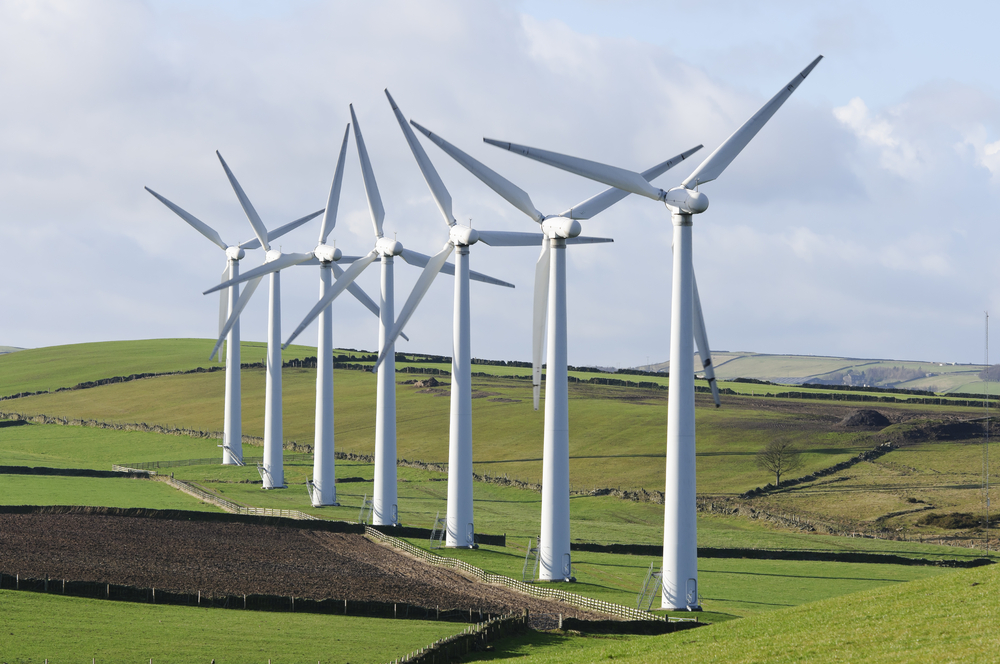What’s Good and What’s Bad about Wind Energy?
- April 13, 2015
- By Robin Koontz

Wind energy comes from the sun. As solar radiation heats the earth’s surface, hot air rises and cool air fills the voids. This air movement is defined as wind energy. Wind that is harnessed via mechanical means is also referred to as wind energy.
Most of us know how powerful wind is and how devastating it can be when unleashed in vulnerable areas. But wind is also a valuable source of kinetic energy. Humans have harnessed energy from the wind for centuries. We’ve all seen the picturesque windmills gently turning in colorful tulip fields in Holland. Windmills have historically been used to pump water or grind grain and are still used for those purposes. But the more modern windmills that use a wind turbine are able to generate electricity.
Most modern windmills are horizontal axis turbines. These turbines are mounted on a tall tower as a way to capture the faster and less turbulent wind, generally hundreds of feet in the air. Propeller-like blades, usually two or three, act much like airplane wings. They are attached to a rotor, which behaves much like an airplane propeller. A combination of (air) lift and drag on the blades causes the rotor to spin. A shaft attached to the rotor spins a generator and electricity is produced. The amount of electricity depends on the size of the wind turbine and the quality of the wind resource. A standard 2-megawatt turbine in the right place can provide electricity to power about 500 average homes for a year.
As mentioned, a single windmill can be used for pumping water or grinding grain, and also for charging batteries, supplemental energy and communication. Several windmills can be connected to a power grid for an electricity provider, called a utility. Some wind turbines are even combined with photovoltaic (solar cell) systems.
Wind farms, also called wind plants, refer to a large number of wind turbines that are built close together. Countries such as the U.S. and China are producing more and more energy from wind farms. It was reported in March 2015 that China is getting more electricity from wind than from its nuclear power plants, and it has more of those than any other country. In spite of lower wind speeds in 2014, Chinese wind farms produced enough power to electrify more than 110 million homes! Meanwhile, according to the U.S. Department of Energy, the U.S. now has the wind power capacity of 65,879 megawatts of energy. In 2013, wind power generated 4.13 percent of all the electricity in the country, making it our fifth largest electricity source. There was enough electricity generated to power the equivalent of 15.5 million homes.
Some energy experts feel that if we harness just a fraction of the available power from wind energy, there would be no need for any other source of electricity in the world!
Here are some of the *pros* for wind energy:
- It only requires wind to work.
- It is considered to be a green source of energy. It does not pollute itself.
- It is a domestic source of energy.
- It is a renewable resource with huge potential.
- Wind turbines only require periodic maintenance, unlike other power sources.
- Wind power is accessible and affordable for homeowners and businesses to set up their own power grids and even sell electricity to their communities.
- Wind turbines are very space-efficient. Farmers can also rent their property for wind farms and still continue to farm the land.
There also some *cons* when it comes to wind energy:
- Wind energy is not considered to be reliable. It is a fluctuating source of energy.
- Electricity from wind energy must be stored (i.e. batteries).
- Wind turbines are a potential threat to wildlife such as birds and bats.
- Deforestation to set up a wind farm creates an environmental impact.
- Noise is a complaint with many wind farms that are close to communities.
- Some people find wind farms to be unsightly.
The studies done about the ill effects of wind turbines on wildlife have for the most part been scattered, and conducted mostly by the people who promote wind energy. The National Wind Coordinating Committee (NWCC) recently considered “peer-reviewed research” that showed evidence of collisions with wind turbines among birds and bats. There were deaths and injuries also due to changes in air pressure that is caused by spinning turbines. The NWCC concluded that “these impacts are relatively low and do not pose a threat to species populations.” Wildlife organizations tend to disagree. Wind turbines have harmed and killed thousands of threatened and endangered bird species, including the golden eagle.
Measures have been employed to try to reduce the impact of wind turbines on wildlife. One example is better siting of wind turbines in areas with smaller wildlife populations. Another is upgrading older turbines with designs that are more wildlife-friendly, such as flaps that deter a bird’s flight into the rotors. And some wind farms are shutting down during bird and bat migrations if they are located along migratory routes. Whether any or all of these measures are helping is unclear at this point. As the wind energy business grows and expands, researchers continue to try to figure out ways to decrease the impact wind turbines have on wildlife.
Discussion and Research Projects:
- Wind energy sounds like an excellent source for alternative energy! But the impact it has on wildlife and the environment is important, too. Discuss the pros and cons presented here, and challenge students to come up with possible solutions. They should be armed with more information than we had room to include in this article.
- Where are all the wind farms in the U.S. or in the world today? Why were those locations chosen?
- Using information from the article, have your students figure out how many wind turbines would be needed to power their home city. They’ll need to do some data gathering and choose a design.
- The article mentioned horizontal axis turbines. There are also vertical axis turbines, which are not as common. Find out what and where they are and their advantages and disadvantages.
- How do people make use of other alternative energy resources – not just wind, but water, solar, wave, and geothermal?
Activity:
Build a wind turbine!
Younger kids can make a simple paper windmill that operates like a wind turbine.
http://www.instructables.com/id/Paper-Wind-Mill/
This wind turbine is not very complicated:
http://www.instructables.com/id/Junior-Wind-Turbine/
Here is a PVC wind turbine for older grades:
http://www1.eere.energy.gov/education/pdfs/wind_basicpvcwindturbine.pdf
Here’s an animated infographic explaining how wind turbines work via SaveOnEnergy.com:

Kids Discover Talks with Book Editor Karen Cicero about Good Housekeeping’s 2025 Kids’ Book Awards
- December 22, 2025

Kids Discover Talks with Television Lighting Designer Christopher Landy About the Rockefeller Center Christmas Tree Lighting
- December 9, 2025

It’s the Most Wonderful Time of the Year… For Community Service Projects!
- December 8, 2025